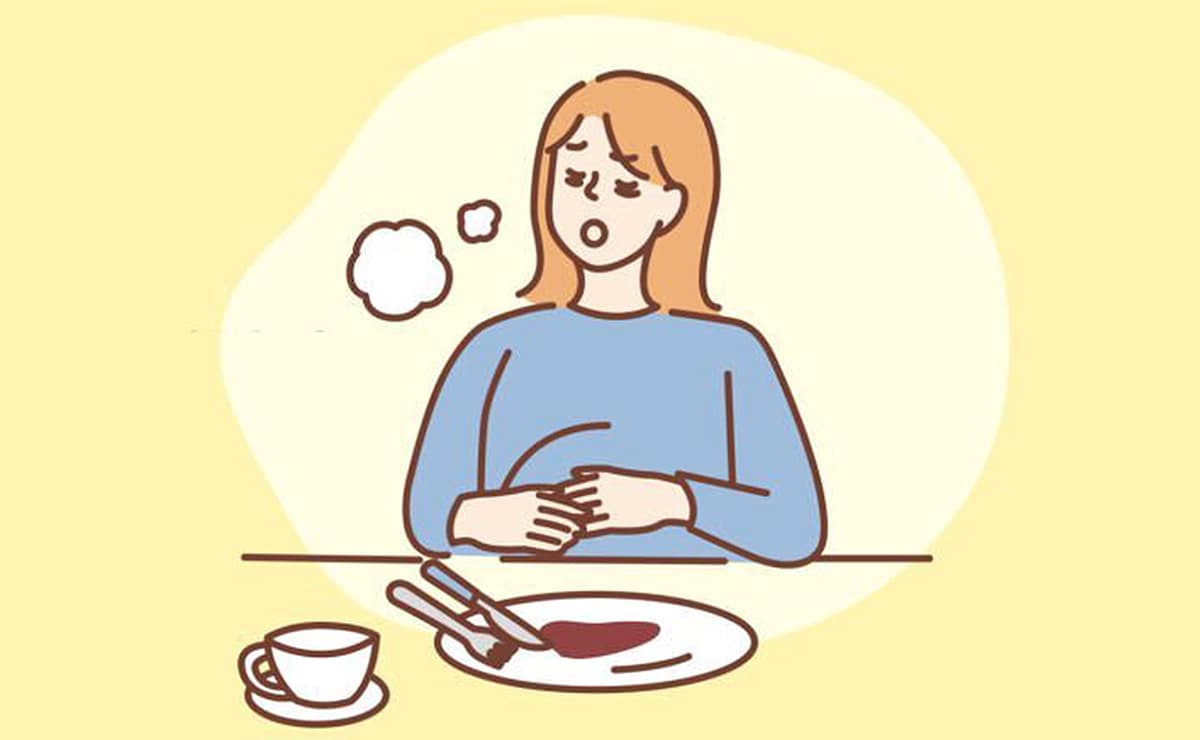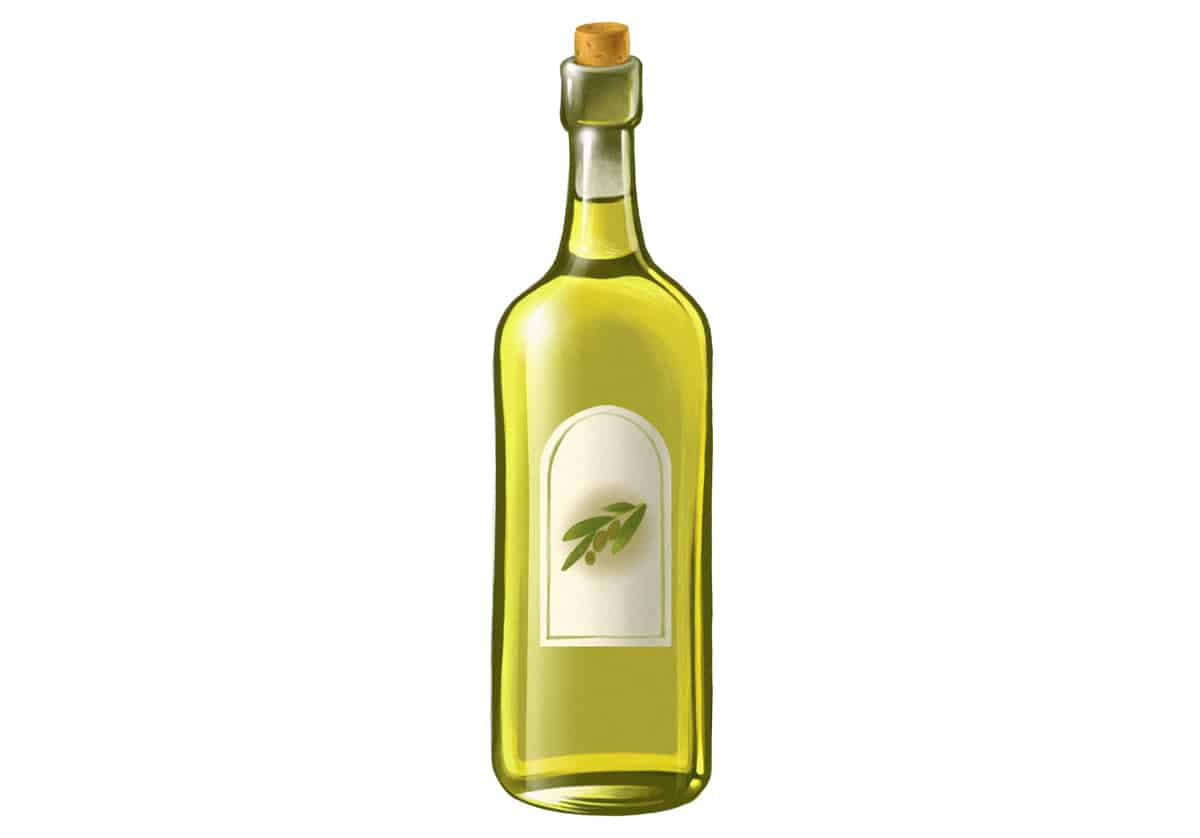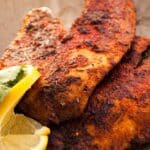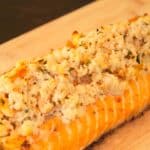
If a food is satiating, that means it makes you feel full. One of the big premises of Paleo is that dietary fat is satiating. So Paleo, which is relatively high in fat, is more satiating than a typical high-carb, low-fat weight loss diet. That makes people naturally eat less, not because they're counting calories and white-knuckling it, but because they just don’t want to eat more.
But if you start going through the scientific literature on this, you’ll notice something: “high-fat” diets are constantly used to cause weight gain in lab animals. In fact, judged in isolation, fat definitely isn’t the most satiating of the three macronutrients. As this review explains, that particular prize goes to protein by a pretty big margin. Carbs and fat have to duke it out for second place.
But if that’s all true, why do we keep getting studies like this one? Here, the subjects got either a low-fat/high-carb or a low-carb/high-fat diet, and they could eat as much as they wanted. After 1 year, the low-carb/high-fat group lost 3.5 kilograms more than the high-carb/low fat group.
Here’s another one. Subjects were either put on a low-fat, calorie-restricted diet (basically the kind of diet that all the Food Pyramid types are constantly telling us to start eating) or on a high-fat/low-carb diet. The high-fat dieters lost more weight, without deliberately counting calories – they ate to hunger and still ate less.
What gives? Two things:
- Lab measurements of appetite aren’t always useful. People eat for all kinds of reasons that aren’t hunger (stress, comfort, habit…) and people are often very bad judges of their own appetite anyway. Who hasn’t sat down to a meal thinking they weren’t hungry and then realized that they were hungrier than they thought? Questionnaires about appetite given to subjects in a lab don’t really reflect people’s real-world eating behavior. A lot of studies - like the review above - slam fat because it doesn't always make people say they aren't hungry, but that's just not always applicable to the real world.
- It’s all about context. Not all high-fat diets are the same. Fat can be satiating in some contexts but not in others. So simply saying “high-fat diet” isn’t enough – technically, both an avocado and a bowl of ice cream are high in fat.
So here’s a look at how high-fat meals, in the context of a Paleo-style diet, actually get people to naturally eat less. In the Paleo context, fat is satiating, because of the way it interacts with the other aspects of the diet.
For the calorie-confused: yes, “less” here means “fewer calories.” Calorie balance does matter on a basic physiological level, as even low-carb advocates will tell you. But calorie balance is determined by way more than adding calories eaten and subtracting exercise. Lasting weight loss depends on doing different things with the calories you take in (this would be where hormonal factors like insulin come out to play) as much as it depends on manipulating the number of calories going in and out. If you’re confused about this, here is a good place to start, but in the interest of space, the basic idea underlying this post is that calories do “count” at some level, but that counting calories is a bad plan and metabolic healing should be the primary focus of weight loss, with calorie reduction coming as a natural consequence of a decrease in hunger.
High Fat in the Paleo Context
Not all high-fat diets are the same. Unless you’re eating sticks of pure solidified coconut oil, your “high-fat” diet has something in it besides fat. That “something” could be sugar and refined flour (if you’re eating a doughnut or a cookie) or it could be spinach and tuna fish (if you’re eating a salad).
Lots and lots of studies have found that the doughnuts-and-cookies version of a high-fat diet isn’t satiating at all. In fact, it’s the opposite. High fat + high sugar (especially if you also add high salt) is a perfect recipe for compulsive and even addictive overeating. Adding more fat to a junk-food diet makes people more likely to overeat it, not less. (You can read more about food addiction and hyper-rewarding foods here, here, and here).
Fat doesn’t have some magic property that instantly makes all high-fat foods satiating just because they’re high in fat – far from it. The magic comes from eating fat in the context of a Paleo diet.
Specifically...
Fat + Vegetables

Paleo isn’t just high-fat. It’s high-fat and high-vegetable (for most people, although there are a few people with very extreme fiber or other sensitivities). The fat makes the vegetables taste good and motivates people to eat more of them. This has two important effects:
- It increases fiber consumption. Vegetables are high in fiber, which has been shown to increase satiety in approximately a million different studies (here's a review). By getting people to eat more vegetables, fat gets them eating more fiber, which increases satiety.
- It negates any calorie density problems. This study found that calorie density (basically the number of calories per bite of food) was one big reason why people ate more on a high-fat diet. It’s just too easy to eat 1,000 calories of shortbread cookies, peanut M&Ms, or other high-calorie-density, high-fat foods. But when researchers kept the calorie density the same, men on high-fat, low-fat, and medium-fat diets all ate the same amount of food. But if your “high-calorie-density” butter is spread out over a huge pile of low-calorie-density Brussels sprouts, then the fat isn’t actually contributing to increased calorie density.
So one reason why high-fat Paleo works for satiety is that Paleo is also a high-vegetable diet. The fat and the vegetables work together.
Fat and Metabolic Healing
Another reason why fat naturally helps people eat less on Paleo is that it’s eaten in the context of an appropriate carb intake for each person. A lot of people come to Paleo with pre-existing metabolic issues – poor blood sugar control, insulin resistance, or outright diabetes. For those people, a carb-based diet often causes big blood sugar spikes and crashes that throw their hunger and appetite signaling completely out of whack.
One simple solution is to reduce carbohydrates and replace them with fat, which doesn’t have the same roller coaster effect. Fat in the Paleo context helps people manage their hunger by giving them a reliable source of energy that isn’t carbohydrate. In other words, fat is a replacement for carbs. Instead of eating a bagel with jam for breakfast (high in carbs, low in fat), people eat eggs (high in fat, low in carbs) This is completely different from the standard American model of fat as an addition to carbs (the "high-fat" diets that researchers use to make mice obese in a lab are typically also high-carb diets: instead of replacing the hypothetical bagel with eggs, they've just added a bunch of butter on top of the bagel).
That’s another reason why a high fat consumption reduces hunger in the Paleo context: it helps resolve metabolic problems that cause crazy hunger hormone signaling.
Summing it Up
In the Paleo context, fat helps people manage their appetite and naturally feel hungry for less food. It’s not just because the fat in isolation has some kind of appetite-suppressing magic. It’s because the fat works together with all the other aspects of the diet.
It’s true that researchers often use a high-fat junk-food diet to make mice and rats gain weight. In terms of satiety, that model of high-fat diet is awful. But a Paleo-style high-fat diet works because you're eating the fat in a completely different context.





Leave a Reply